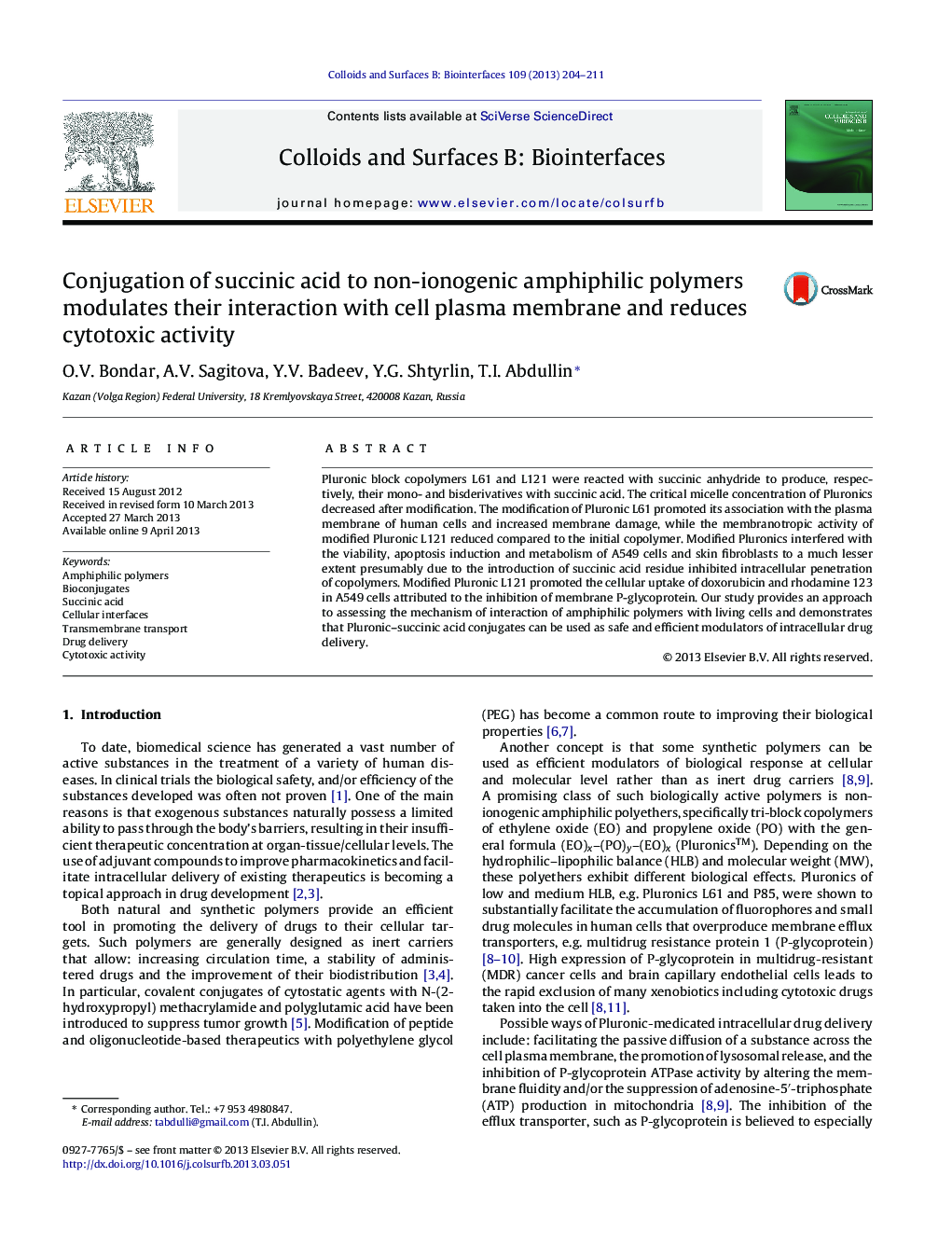| کد مقاله | کد نشریه | سال انتشار | مقاله انگلیسی | نسخه تمام متن |
|---|---|---|---|---|
| 600098 | 1454295 | 2013 | 8 صفحه PDF | دانلود رایگان |

• Hydrophobic Pluronics L61/L121 have been efficiently conjugated with succinic acid.
• The conjugation dramatically affects the interaction of polymers with cell membranes.
• The modified Pluronics exhibit reduced adverse effects on human cells.
• The conjugation of Pluronic L121 promotes intracellular drug delivery.
Pluronic block copolymers L61 and L121 were reacted with succinic anhydride to produce, respectively, their mono- and bisderivatives with succinic acid. The critical micelle concentration of Pluronics decreased after modification. The modification of Pluronic L61 promoted its association with the plasma membrane of human cells and increased membrane damage, while the membranotropic activity of modified Pluronic L121 reduced compared to the initial copolymer. Modified Pluronics interfered with the viability, apoptosis induction and metabolism of A549 cells and skin fibroblasts to a much lesser extent presumably due to the introduction of succinic acid residue inhibited intracellular penetration of copolymers. Modified Pluronic L121 promoted the cellular uptake of doxorubicin and rhodamine 123 in A549 cells attributed to the inhibition of membrane P-glycoprotein. Our study provides an approach to assessing the mechanism of interaction of amphiphilic polymers with living cells and demonstrates that Pluronic–succinic acid conjugates can be used as safe and efficient modulators of intracellular drug delivery.
Figure optionsDownload as PowerPoint slide
Journal: Colloids and Surfaces B: Biointerfaces - Volume 109, 1 September 2013, Pages 204–211